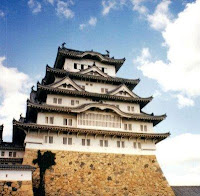Mekongga Mountains, the charming adventurous place
 A place that is often an arena for mountaineering, trekking and climbing fans, one of the highest mountain in Southeast Sulawesi which serve natural tropical forest environment with a million charm.
A place that is often an arena for mountaineering, trekking and climbing fans, one of the highest mountain in Southeast Sulawesi which serve natural tropical forest environment with a million charm. Mount Mekongga is the highest mountain (2620 m) in the rugged Mekongga mountains with karst plateau stretching north side Kolaka regency, Southeast Sulawesi Province, space for the unique endemic biota flora and fauna found only in this region.
 Recently, on July 2011 a group of researchers from the University of California-Davis, United States, spellbound by the biodiversity there, they conclude that the Mekongga Mountains is one of the regions with the richest biodiversity in the world.
Recently, on July 2011 a group of researchers from the University of California-Davis, United States, spellbound by the biodiversity there, they conclude that the Mekongga Mountains is one of the regions with the richest biodiversity in the world. "For research in Mekongga, we saw incredible biodiversity," says Professor Lynn Kimsey, an entomologist (insects), which for the last month doing research with a team from the Board of Science and Research of Indonesia (LIPI) in the Mekongga Mountains.
 It successfully collected 100,000 samples of insects, half are new types that have not been found previously. Compared to some places that have explored, such as Chile, Panama, Papua and Australia, insects found in Mekongga has an unique character. "For example, we find the world's largest giant bees (over 4 cm) are not found elsewhere," she said.
It successfully collected 100,000 samples of insects, half are new types that have not been found previously. Compared to some places that have explored, such as Chile, Panama, Papua and Australia, insects found in Mekongga has an unique character. "For example, we find the world's largest giant bees (over 4 cm) are not found elsewhere," she said. Trekking enthusiasts can start the climb from the Surolako, Rantebaru Village in Sub Ranteangin can be achieved with four-wheel drive about four hours from the town of Kolaka take 5-6 days to the peak, tropical forest environment with forest birds chirping or when lucky we can meet Anoa or dwarf buffalo (Bubalus quarlesi), crossing the Mosembo and Tinukari River.
Other strips can be reached via Pomalaa, mining location of Aneka Tambang Corp., from there continue by city transportation ('Pete-Pete' by the locals terms) to terminal Larumbalangi Sabilambo, from there to the old terminal of Kolaka to the last village, Tinukari with beautiful views of the Gulf of Bone.
Fascinating area that has not been visited by the adventurers and mountaineers, even worried about mining activity can affect the ecosystem there.
-------------------------------------------------- -
(Various sources /Images LIPI, Biodiversitas Indonesia, H. Ashari and CC)


Comments
Post a Comment